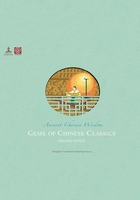
缀术 (zhuì shù)
The Method of Interpolation
A man clearly ahead of his time
Zhui Shu or the “Method of Interpolation” was a book containing most of the research achievements of Zu Chongzhi (429-500 AD), one of the most outstanding mathematicians and astronomers in the world, and his son Zu Gengzhi, also a famous mathematician in ancient China.
The book represented the highest level of mathematical studies for about 1,000 years in ancient China. During the Tang Dynasty (618-907 AD), it became a designated textbook for a four-year mathematics course in the Imperial Academy. It was later introduced into Korea and Japan.
However, the book was deemed by many Chinese scholars as one of the most “recondite” among Chinese classics and some even shied away from it. This was probably one of the reasons the ancient mathematical text failed to survive to the present day.
Zu Chongzhi, the chief author of the book, became interested in astronomy when he was a young boy. He read the Chinese classics on astronomy extensively from his family’s rich collection and decided to take astronomy study as his career.
When his family moved to today’s Nanjing, capital of Jiangsu Province in eastern China, from the north to escape wars and political turmoil, both his grandfather and father began to serve in the imperial court of the Liu Song Dynasty (420-479 AD). His grandfather was appointed an engineer in charge of construction and his father a technical consultant.
Under the emperor’s patronage, the young man was sent to study at the Imperial Nanjing University and then the Imperial Institute. Later, he was assigned to work for the local governor in today’s Zhenjiang, Jiangsu Province.
During his study and research at those institutes, Zu first concentrated on calculating the value of pi. Thanks to his computation technique which was way ahead of its time, Zu was able to work out the numerical value of pi to be between 3.1415926 and 3.1415927. Zu obtained this extraordinary fraction more than 1,000 years before European scientists. And Zu’s pi was later named by other scientists as the Zu Chongzhi Fraction.

In 465 AD, Zu created a new calendar, the Daming Calendar, for the imperial court. The new calendar was a great improvement over previous calendars and contained many discoveries that Zu had made in astronomy. For instance, Zu calculated the yearly difference based on the movement of the earth’s axis in relation to the fixed stars. In other words, he measured the difference between the Sidereal Year and the Tropical Year.
Zu’s measurement of 45 years 11 months per degree was rough compared with the difference of 70.7 years per degree as is known today. However, he was the first astronomer in the world to incorporate the measurement into a calendar. In addition, he calculated the Jupiter years as about 11.858 Earth years, very close to 11.862 years as is known today.
In addition to his contributions to mathematics and astronomy, Zu also made great achievements as an engineer. One of his most outstanding feats is his reinvention of the South Pointing Chariot in 478 AD.
Unlike a compass, which relies on magnetism to achieve the north-pointing effect, the South Pointing Chariot was based on complicated gear works to enable a fixed figurine on a chariot to constantly point south. The device was invented by a Chinese mechanical engineer called Ma Jun in 255 AD, but later lost in history.
Scholars today can’t decide when this valuable book “Method of Interpolation” was lost. Some say it was during the Tang Dynasty after it was dropped from the syllabus in the Imperial Academy because of its complexity. Others say it was during the early years of the Song Dynasty (960-1279 AD).
But one fact clearly recorded in Chinese history books is that when the Imperial Court of the Song Dynasty decided to use the block printing technique to reprint the “Ten Classics of Mathematics” in 1084, Zu’s book, the “Method of Interpolation,” was already lost.